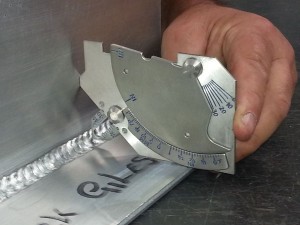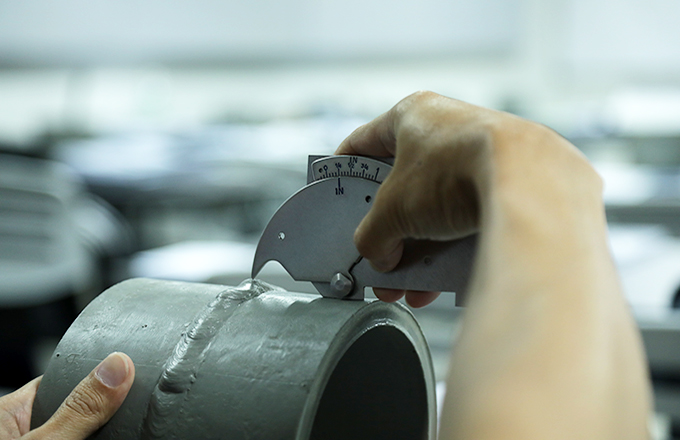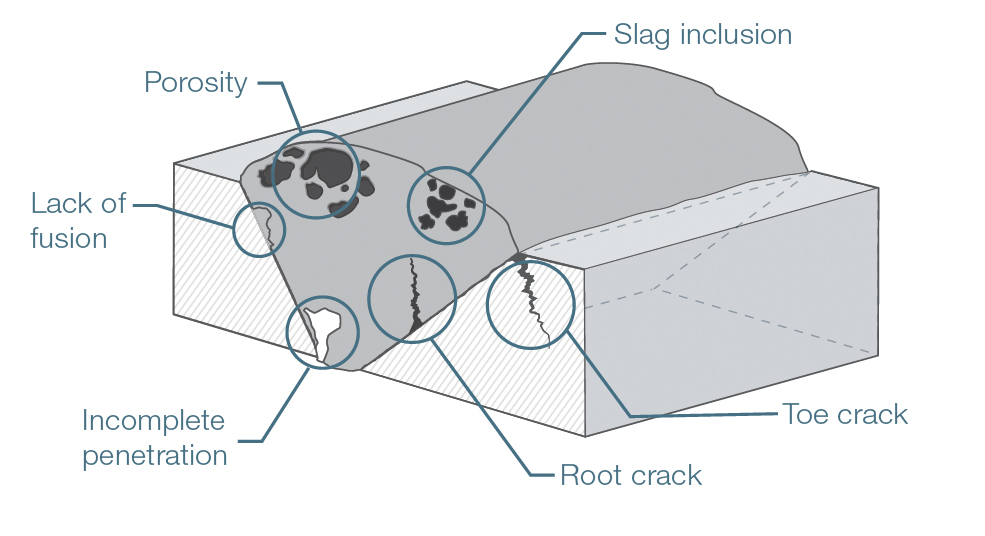A Comprehensive List for Effective Welding Inspection Practices
In the realm of welding, the integrity of structures is paramount, necessitating a rigorous approach to inspection techniques. A thorough list acts as a crucial tool in guaranteeing adherence to industry standards, encompassing essential pre-welding, in-process, and post-welding evaluations. By methodically attending to material verification, weld top quality, and detailed documents, companies can considerably enhance safety and security and efficiency. However, what specific components should be focused on in each stage to achieve optimum outcomes? Exploring these critical parts can produce insights that greatly effect welding operations.
Comprehending Welding Criteria
Welding criteria play an essential duty in guaranteeing the top quality and security of bonded parts and structures. These criteria develop the requirements for products, procedures, testing, and examination, thereby supplying a structure for consistent quality control in welding processes. Different companies, including the American Welding Society (AWS), the International Company for Standardization (ISO), and the American Culture of Mechanical Engineers (ASME), have established thorough standards that regulate various facets of welding.
Understanding welding standards is necessary for specialists in the field, as adherence to these guidelines reduces the danger of issues and failures in bonded joints. These standards cover specific demands for weld high quality, consisting of appropriate resistances, the sort of welding techniques to be used, and the qualifications needed for welders and examiners.

Pre-Welding Inspection Steps
Prior to any type of welding procedure commences, a detailed pre-welding assessment is important to recognize potential problems that might compromise the high quality of the weld. This initial step offers as a crucial structure for ensuring compliance with suitable welding codes and standards.
The first step in the pre-welding assessment is to validate the products being made use of. Next off, it is crucial to examine the fit-up of the elements to make sure appropriate placement and joint arrangement.
In addition, reviewing the cleanliness of the surfaces is vital; contaminants such as paint, oil, or corrosion can detrimentally influence the high quality of the weld. Following this, a detailed analysis of the welding equipment must be performed, making certain that it is adjusted and in great working condition.
Lastly, reviewing the qualifications of the welding employees is essential. Welders must have the essential qualifications and experience to do the particular welds required for the project. By sticking to these pre-welding assessment steps, the likelihood of defects and failings in the final weld can be considerably reduced.

In-Process Evaluation Strategies
In-process evaluation strategies play a vital function in making certain the honesty and quality of welds as they are being implemented. These methods enable inspectors to determine problems or deviations from requirements in genuine time, consequently preventing expensive repairs and making certain adherence to style demands.
One trick method entails aesthetic examination, where assessors examine the weld grain for harmony, penetration, and appropriate profile. This can be matched by the use determines to measure weld dimensions, making certain conformity with established resistances. In addition, the execution of non-destructive testing (NDT) approaches, such as ultrasonic screening or magnetic bit testing, during the welding process can reveal subsurface imperfections that may not be visible on the surface.
One more essential aspect is checking welding parameters, consisting of voltage, amperage, and take browse around this web-site a trip speed. Consistency in these criteria is essential for achieving ideal weld top quality. Recording these parameters during the welding procedure provides a traceable document for future referral.
Training workers in appropriate evaluation methods and making use of suitable tools enhances the effectiveness of in-process examinations. By incorporating these methods, organizations can achieve greater quality welds, decrease rework, and eventually ensure the safety and security and reliability of bonded frameworks.
Post-Welding Quality Checks
Following the completion of welding operations, post-welding top quality checks are vital to validate that the welds fulfill all defined requirements and criteria. These checks are essential for making sure the integrity and resilience of the bonded joints. The inspection procedure normally starts with an aesthetic evaluation, analyzing for surface area issues such as fractures, porosity, or insufficient blend.
Consequently, non-destructive screening (NDT) methods, such as ultrasonic screening, radiographic screening, or magnetic particle screening, might be utilized to detect inner problems that are not visible to the naked eye. Each method has its unique benefits and is picked based on the original site weld's location, material kind, and the nature of the application.
Evaluating the mechanical homes of the weld, consisting of tensile stamina and ductility, can give additional assurance of performance under functional problems. Generally, complete post-welding assessments are vital for preserving safety and security, performance, and adherence to governing and market standards.
Documents and Reporting
Just how can efficient documents and reporting boost the welding evaluation procedure? Accurate paperwork and detailed reporting are crucial elements that make sure the honesty and top quality of welding procedures. Welding Inspection Milwaukee. They offer as a formal document of assessment findings, helping with accountability and traceability in conformity with industry requirements

A well-structured coverage system allows examiners to plainly communicate see page any non-conformances, inconsistencies, or areas requiring enhancement. This openness promotes a setting of continual renovation, as stakeholders can conveniently assess past performance and execute corrective actions.
Moreover, reliable documents consists of thorough documents such as welding treatment requirements (WPS), welder credentials, and inspection lists. These components give a structure for reviewing weld top quality and adherence to developed standards. In the occasion of conflicts or high quality issues, extensive paperwork acts as a reputable recommendation, decreasing ambiguity and protecting all events entailed.
Finally, preserving organized documents helps in training and accrediting personnel, ensuring that sector finest practices are upheld. Inevitably, careful paperwork and reporting not only boost the welding assessment process yet likewise contribute to the total security and reliability of bonded structures.

Conclusion
In verdict, a thorough list for efficient welding examination techniques is essential for making certain top quality and security in welded structures. Adherence to developed welding criteria, careful pre-welding assessments, extensive in-process assessments, and comprehensive post-welding quality checks jointly add to the stability of welded joints.
Welding criteria play a vital function in guaranteeing the quality and safety and security of welded elements and structures. Numerous organizations, including the American Welding Culture (AWS), the International Organization for Standardization (ISO), and the American Culture of Mechanical Designers (ASME), have created extensive criteria that regulate different facets of welding.
Complying with the conclusion of welding operations, post-welding quality checks are important to verify that the welds meet all specified standards and requirements - Welding Inspection Milwaukee.In final thought, a detailed list for efficient welding inspection methods is vital for making certain quality and safety and security in welded frameworks. Adherence to established welding requirements, meticulous pre-welding assessments, rigorous in-process examinations, and comprehensive post-welding high quality checks jointly contribute to the honesty of bonded joints